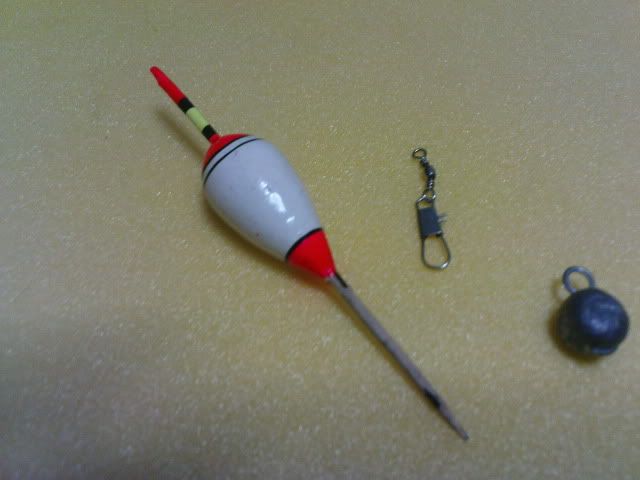I feel the need to know more about prawning after my virgin experience at doing prawn fishing.
Please do not misunderstood that suddenly, I became an expert in prawning and now telling you how to do prawning. What I am trying to achieve is to share what I have learnt while talking to other fisho who like prawning, and hopefully newbies and fisho ,who are as clueless as me when it comes to prawning, can come to grasp with the concept without tearing out one's hair.
Although I have very limited experience in prawning, but with my noodle rod and limited pole fishing experience, I felt that it is actually not as difficult as I thought it would be.
Back to main discussion topics, this post will be more applicable to those who already own or intend to buy their own prawning rod. As usually the house rod is 'ready to go', there's not much things you can do to it.
First of course is the rod selection, some like soft tip while some like it stiff. After asking around, it seems that most actually prefer a soft tip. No idea why, could be because it is more forgiving and gives you a better sensation while fighting the prawns. I have been told to use soft tip rods if I am to do SW prawning, as they are more alert and frisky then their FW cousin. Length wise will depends on which pond you frequent, choose one that suit the pond.
 Next if the main line, if you have some spare light poundage superline use them, be it fireline, power pro, etc. The lightest poundage is enough. Although it is just a short length, it does makes a different to me at least, in fact I am surprised that it did make a difference. Should you do not have any light poundage superline around, when you purchase your rod, ask the tackle shop if they can spare you some. I do know some tackle shops do give it to their customer when they buy prawning rods from them.
Next if the main line, if you have some spare light poundage superline use them, be it fireline, power pro, etc. The lightest poundage is enough. Although it is just a short length, it does makes a different to me at least, in fact I am surprised that it did make a difference. Should you do not have any light poundage superline around, when you purchase your rod, ask the tackle shop if they can spare you some. I do know some tackle shops do give it to their customer when they buy prawning rods from them.As a guide, the length of the main line, plus swivel, plus the hook rig should not be longer then the extended rod. This will make it easy for you to handle the prawn when you have lift it out of the water.
Prawning floats, that small tiny tear drop shaped float as shown in the pic above. Obviously, not all floats are created equally, in fact they come in different sizes / buoyancy, it is usually stated by a number on the float itself for the better quality ones. Unlike mine which is a cheapo version, there is no number indicator on it.
Once you have rigged up, and place the entire rig into the pond, the float should be resting between the 2 blacks lines, at the top of the float, at the water surface. Too much of the float above the water surface, the resistance of the float gives might cause the prawn to let go of the bait. Too little of it above the water, it get too sensitive that the water current might fool you to think a prawn is taking the bait. Do stock up some in different buoyancy, as on different day the water condition might be differs slightly.
Use the smallest swivel you can find, the swivel gives it the required weight to sink downwards and easy for you to change the hooks should you need to easily. Before you secure the swivel, make sure you have the float stopper on the main line before you secure it. I dun have any float stopper to show the pics, basically it look like a short length of rubber tubing.
Prawns hooks are available in most tackle shops, they look like circle hooks. Gone were the days where the ultra tiny hooks are used, these new designed hooks makes it easier to remove the prawns once they are caught. However, I learn that sometimes those tiny hooks are still being used once a while by some prawning fisho, might be on slow biting days, something I have yet to discover. Hooks are usually available tied and ready at the pond, just asked the pond operator for it.
In case if you wonder if I have incorrectly include the lead weight in the pic, I have not. This is the last tiny bit of tips I wish to share. This is a fast and easy method to measure the depth of the pond, simply hook the lead weight to the hook and chuck it into the pond to adjust the position of the float. Really quick and effective way to measure the depth if you keep moving around the pond.


0 comments:
Post a Comment